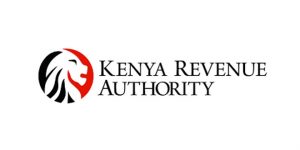Users of digital loans in Kenya will now feel the full heat of the 20 percent tax placed on fees and commissions earned earned on bank credit. The 20 percent tax was implemented on the 1st of July 2021.

All or a substantial portion of the fee charges placed on mobile loans being provided by Absa Kenya, NCBA (M-Shwari), the Kenya Commercial Bank (KCB), Equity Bank, and Co-operative Bank have been looked at as facilitation fees.
What this means is that the entire loan or a huge portion of the loan, would come with a 20 percent fee. This will raise the cost of mobile digital advances by a bigger margin when put in comparison to what is compared in usual bank credits.
Fees which usually come with the excise duty in a standard bank loan are processing barges which usually account for an average of 1.5 percent of the total rate of lending. This is a reflection of the additional tax that is equivalent to 0.3 percent.
The additional tax is however higher for services like M-Shwari whose 7.5 percent facilitation fees will result in its duty charges rising by 1.5 percent and subsequently increase the monthly cost of the service to 9 percent.
According to Business Daily Africa a Chief Executive Officer (CEO) of one of the major banks when speaking under anonymity stated that, “The cost of mobile loans will be higher compared to the normal loans because charges for digital products are dominated by fees.”

The Kenya Commercial Bank (KCB) via text messages sent to its users on the afternoon of Friday; the 2nd of July 2021 made it known that loans given via the Kenya Commercial Bank (KCB) M-Pesa will now come with a fee of 8.64 percent which is higher than the previous fee of 7.35 percent.
NCBA Group stated that all the fees and commissions related to loans will have the 20 percent excuse tax including the overdrafts service; Fuliza and M-Shwari which NCBA Group jointly owns with telecommunications giant; Safaricom.
The increase in fees attached to loans is coming not long after President Uhuru Kenyatta passed into law, the return of the 20 percent tax on all commissions and fees a decision which prompted banks in Kenya to pass on the increase in costs, to borrowers.
The excise duty on standard loan fees will result in banks paying the KRA (Kenya Revenue Authority) an amount of over 7 billion Kenyan Shillings every year. This in a nutshell means that credit will become more expensive as lenders will continue to transfer the added burden on to their user.
The Kenya Revenue Authority (KRA) is however looking to generate more revenue from digital loans due to the fact that they come with larger fees and are significantly more expensive than conventional credit facilities.

Borrowers before the new tax was implemented, paid a facility fee of 7.5 percent for the M-Shwari loans. This in turn amounted to a yearly interest rate of 90 percent.
Users of overdrafts service; Fuliza incur a daily fee of 1.083 percent or when put in the context of a year, a 395.2 percent annual fee. This shows the hidden in plain sight high cost of making use of short term credit facilities consistently.
A quote by the Central Bank of Kenya (CBK) in April of 2021 revealed that the average yearly lending rate of commercial banks, was at 12.08 percent.
The Central Bank of Kenya (CBK) will in addition, be regulating the interest rates charged monthly by the numerous digital mobile lenders as well as the non-performing loans of borrowers. That is if a proposed law which has been brought before the Kenyan Parliament, gets implemented.
The Central Bank of Kenya (CBK) will also be in charge of approving the increases in rates of digital lenders and other loan charges as well as putting a cap of not more than two times the defaulted credit on on non-performing loans.

Over the years a number of micro lenders who are unregulated have been investing in the credit market in Kenya. Many believe that it is as a result of the continuous growth in the demand for fast and easily accessible loans.
The rapid build out has sadly resulted in borrowers being hit with significantly higher interest rates that up to as high as 520 percent per year. This leads to increasing defaults and a corresponding increase in borrowers who default on their loans.
With the growth from having almost no access to loans or only access to small amounts, individuals in Kenya can now access loans from the comfort of their mobile phones in a matter of minutes. The move to regulate the activities of digital lenders in Kenya is coming almost two (2) years after the East African nation removed the legal limit on commercial lending rates.
The limit which was first implemented in September of 2016, slowed down the credit growth in the private sector at a time when commercial banks were not quite catering to the lower income customers along with owners of small and medium sized businesses are said categories were seen as being too risky to provide loans to.
The subsequent credit crunch led to a quite high demand for digital loans in Kenya. This demand led to more and more unregulated ‘small scale’ lenders entering into the Credit market in the country.
How informative was this article? Are there any other news topics, categories, or How To topics, that you would like us to write on? Feel free to reach out to Mpesa Pay in the comment section.


